Mavinakaayi marige bajji | Mango raita

By Leena Hegde, Puttanamane
Mavinakaayi marige bajji or marge bajji is a creamy curd based havyaka classic dish served as a side with plain rice. Marige bajji can be with or without mango in it. Marige or marge is a type of cooking pot. May be, in olden days people prepared this dish in this particular type of pot, marige, and named this dish as marige bajji. Bajji or gojju is a relish.
This lip-smacking marige bajji can be prepared either by boiling fresh raw mango or from kochgaayi (boiled and salt preserved raw mangoes). In this recipe, I am using kochgaayi to make marige bajji. Also note that, kochgaayi is a salt preserve, additional salt is not required for the dish. However, you can taste before adding or not adding salt.
If you are using a fresh raw mango, boil the mango and cook until soft. Then follow the rest of the steps in this recipe and you need to add salt as required.


Prep time
15 mins
Cook time
0
Cool off time
0
Total time
15 mins
Course
Curry
Diet
Vegetarian
Difficulty level
Easy
Servings
1 cup
Ingredients
-
1 small or medium kochgaayi (salt preserved raw mango)
- ¾ cup fresh curd
- ½ tablespoon coconut oil or any edible oil
- 1 green chillli or 4 – 5 sanna menasu (tiny or bird’s eye chilli)
- 1 red chilli
- ½ teaspoon mustard seeds
- 1 pinch asafoetida
- ¼ teaspoon turmeric powder
- 6 – 8 garlic cloves
Cookware / Utensils
-
Bowl
- Spoon
- Tempering pan
- Mortar and pestle
Instructions
Instructions
- Rinse kochgaayi (salt preserved raw mango), and take it in a bowl.
-
Squeeze the mango pulp along with its skin and discard the seed.
Note: Normally, kochgaayi will have very thin skin and can be mashed or smashed. If the skin is thick or hard, you can peel it off and use the pulp only. -
Add fresh curd. Mix well.
Note: If you are preparing from fresh boiled mango, add salt as required and mix well. - Wash garlic cloves, and remove outer layer (skin).
- Crush them using a mortar and pestle. Keep aside.
- Chop or crush 1 green chilli
- Heat a tempering pan with ½ tablespoon oil.
- Add 1 pinch asafetida, and ½ teaspoon mustard seeds.
- Let the mustard seeds crackle. Then add red chilli.
- Now add crushed garlic cloves, green chilli, and ¼ teaspoon turmeric powder.
- Add this tempering to the marige bajji. Wait for few seconds.
- Then crush the red chilli into pieces.
- Mix well and serve with hot plain rice.
Step by step guide
How to make Mavinakaayi marige bajji
1. Rinse kochgaayi (salt preserved raw mango), and take it in a bowl.

2. Squeeze the mango pulp along with its skin and discard the seed.
Note: Normally, kochgaayi will have very thin skin and can be mashed or smashed. If the skin is thick or hard, you can peel it off and use the pulp only.

3. Add fresh curd.

4. Mix well.
Note: If you are preparing from fresh boiled mango, add salt as required and mix well.

5. Wash garlic cloves, remove outer layer (skin), and crush them using a mortar and pestle. Keep aside.

6. Chop or crush 1 green chilli. I am using sanna menasu (tiny green chilli) and I am crushing them.

7. Heat a tempering pan with ½ tablespoon oil; add 1 pinch asafoetida, and ½ teaspoon mustard seeds.

8. Let the mustard seeds crackle. Then add red chilli.

9. Now add crushed garlic cloves, green chilli, and ¼ teaspoon turmeric powder.
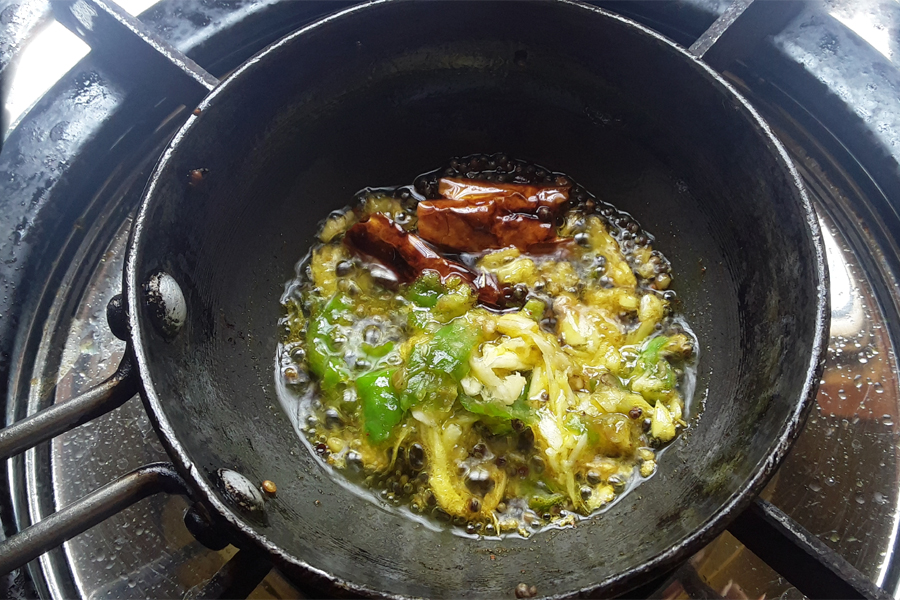
10. Add this tempering to the marige bajji. Wait for few seconds. Then crush the red chilli into pieces.
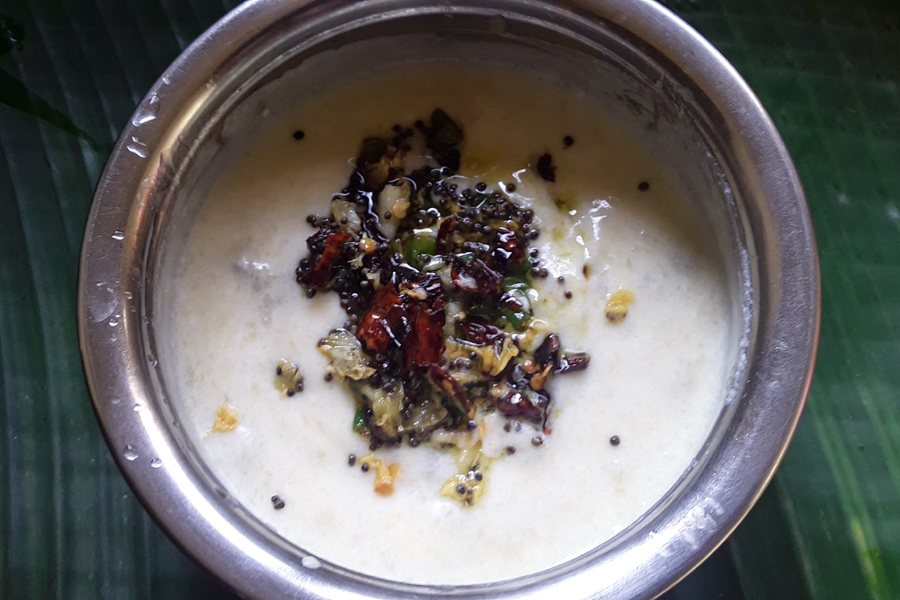
11. Mix well and serve with hot plain rice.

Notes
-
Adding salt: Kochgaayi is a mango salt preserve, and dishes made from them require no salt. However, you can taste the dish before adding or not adding salt. You need to add salt if you have used a fresh boiled raw mango to make marige bajji.
- Marige bajji without mango: Marige bajji can be prepared without mango by simply tempering fresh curd. For tempering add additional 5-6 garlic cloves and ½ teaspoon husked split black gram (uddina bele or urad dal).
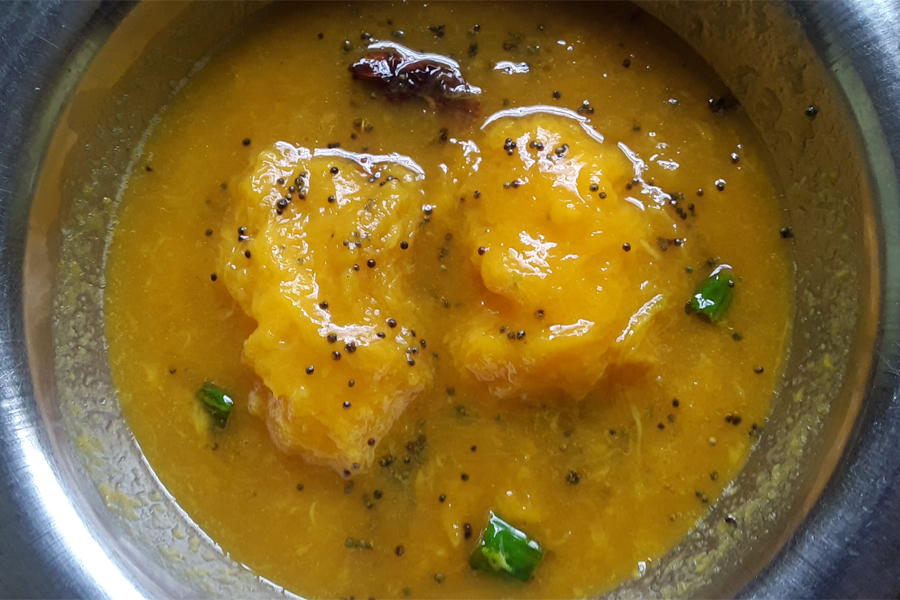
Neergojju | Sweet-sour-spicy mango pulp
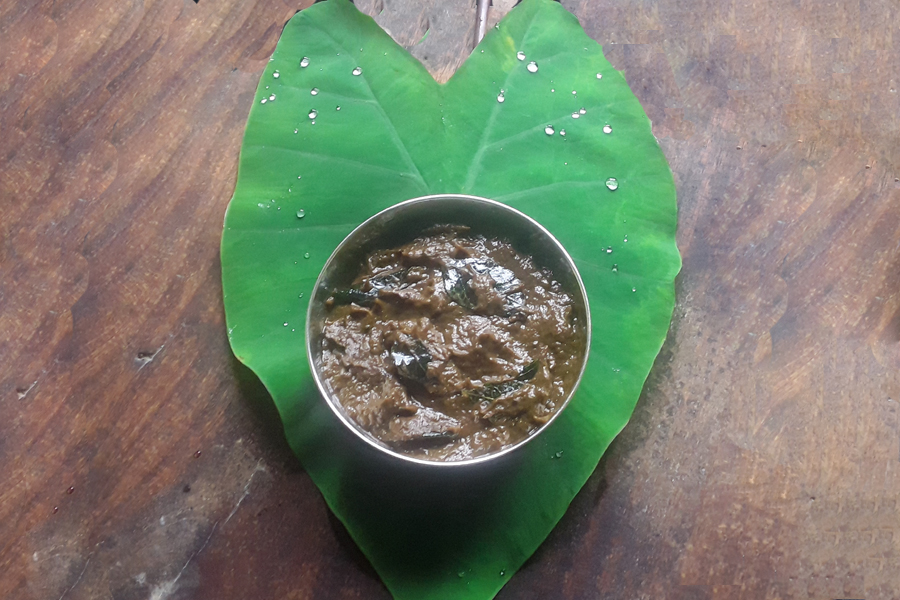
Kesavina karkali | Colocasia or taro relish
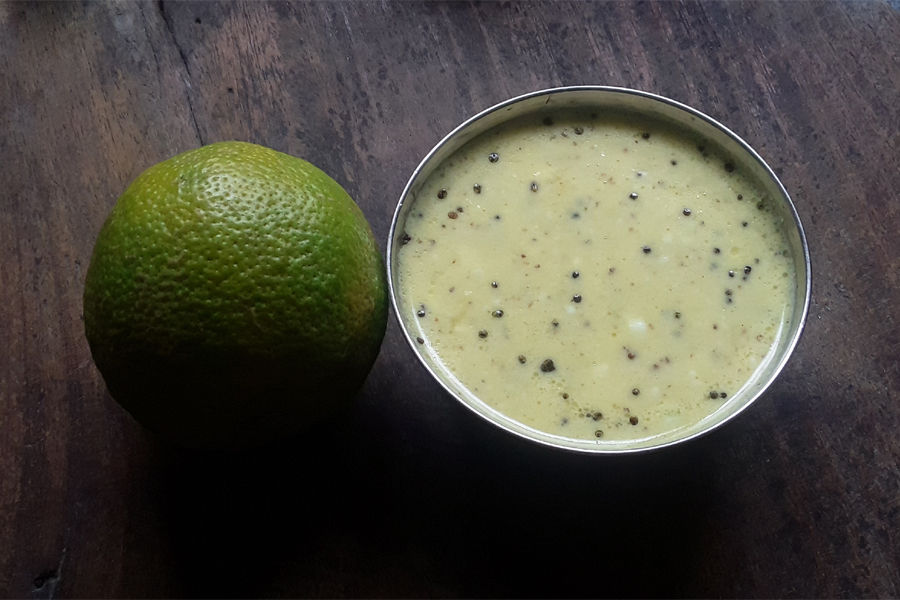
Nimbe hannina sasime | Lemon sasime
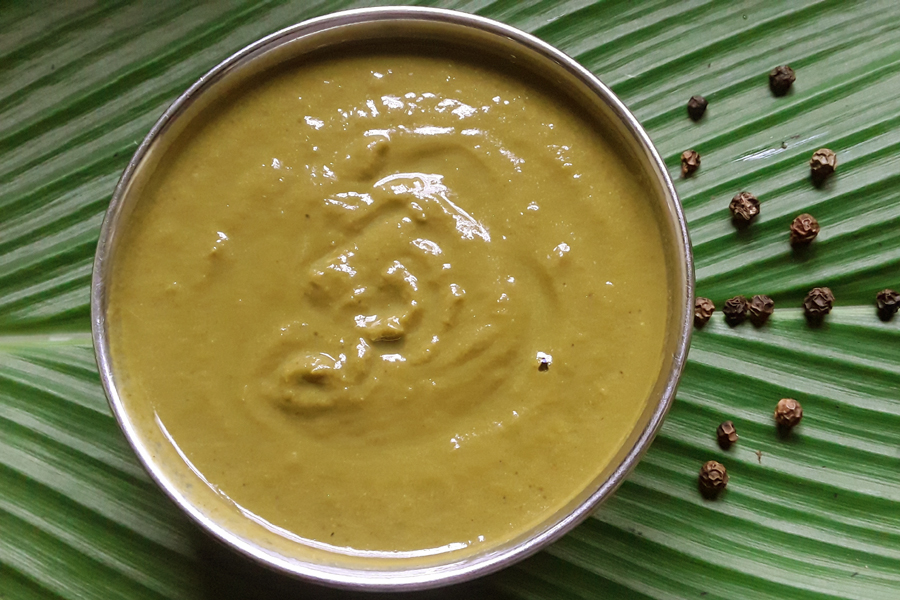
Kannekudi katne or karkali | Kannekudi relish

Maavinakaayi appehuli | Raw boiled mango appehuli

Savatekaayi hashi | Cucumber raita

Maavinakaayi tambli | Raw mango tambli

Tove or Tovve | Dal

Shunthi tambli | Ginger tambli

Hirekaayi tambli | Ridge gourd tambli

Shiya appehuli | Sweet appehuli

Mavinakaayi marige bajji | Mango raita

Kittale sippe gojju | Orange peel relish

Hasi appehuli | Raw mango appehuli

Balekayi palya | Raw banana curry

Mavina hannina sasime | Mango sasime

Haagal kaayi hulimelara | Bitter gourd curry

Batate or Aloo hashi | Potato raita

Haagalkaayi hashi | Bitter gourd raita

Dappa appehuli | Raw mango gravy

Jackfruit Huli | Lentil-jackfruit stew
